NIOSH in Cincinnati-A Pictorial History Part 1
Posted on byNIOSH in Cincinnati – How did it happen, and what has it looked like?
How did federal industrial hygiene and occupational (and environmental) health research and service come to Cincinnati, and why did it stay? Interconnected stories of events, locations, buildings and artifacts provide glimpses of federal staff in Cincinnati investigating occupational health concerns and are a vital part of the history of NIOSH’s present.
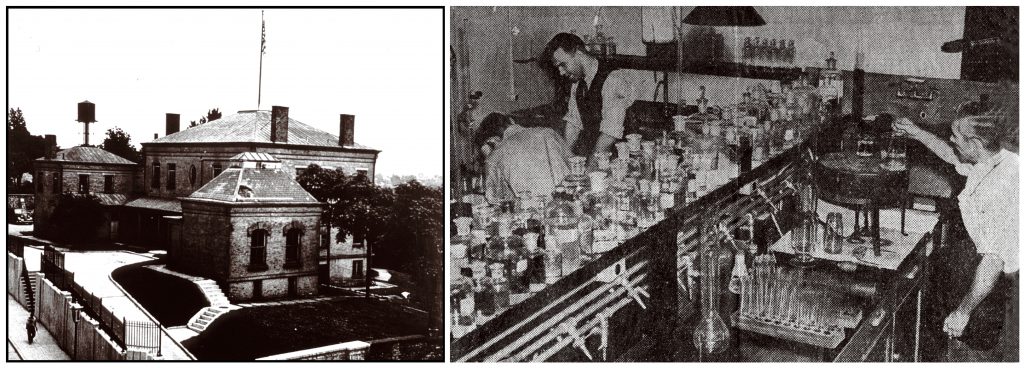
U.S. Public Health Service (PHS) Stream Pollution Investigations Station was established in Cincinnati in 1913 at the former U.S. Marine Hospital/Kilgour Mansion to conduct Congressionally-mandated investigations of sanitation, sewage, and other pollution of the Ohio River and its tributaries. The Ohio River was chosen as the inland water system to study. It is thought that Cincinnati was chosen as the Station headquarters because the former U.S. Marine Hospital, at the east end of downtown, was already there and available and because Cincinnati’s location approximate midway along the course of the Ohio River could be strategic and convenient.
As a separate endeavor, the PHS began its Office of Industrial Hygiene and Sanitation in 1914, as part of the late Progressive Era concern to understand and alleviate diseases and death suffered by workers. The Office of Industrial Hygiene and Sanitation was first in Pittsburgh and moved to Washington, D.C. in 1918. As the country began to come out of the Great Depression in the late 1930s, The Division of Industrial Hygiene conducted and published important medical and hazard control studies, such as silicosis and lead poisoning in the pottery industry, mercurialism in the felt hat making industry, and the lead hazard of the storage battery industry.
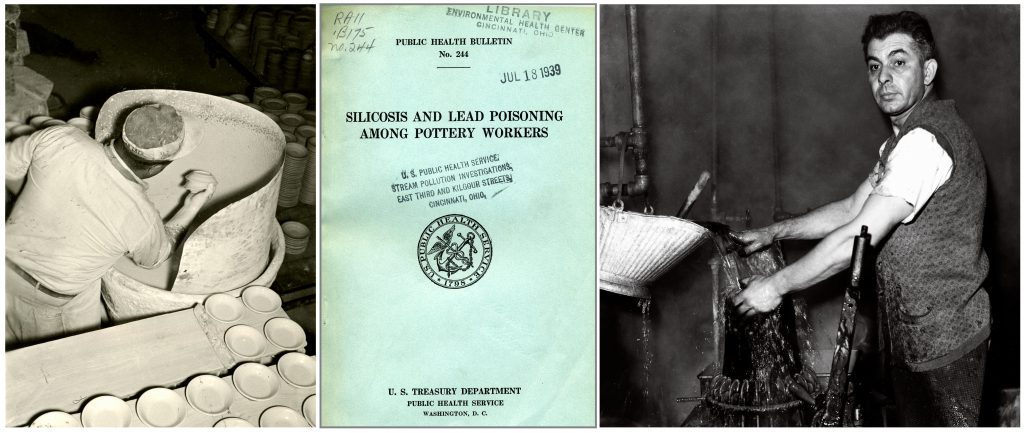
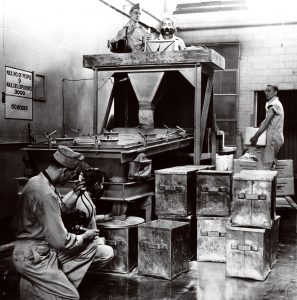
In the buildup to and during World War II, the Industrial Hygiene Division’s main mission was to keep workers healthy and safe so they could produce for the war effort, undeterred by acute illness, injury, and death. They publicized the importance of industrial nursing and promoted industrial nurse training. They investigated industrial exposures and hazards, recommending controls feasible in wartime, such as inexpensive engineering solutions, administrative controls, and personal protective equipment. Of special note was the Division’s success in preventing TNT poisoning among workers in arsenal manufacturing and loading plants.
As the war neared its end, so did the huge national priority for worker safety and health, and a serious situation arose for the Industrial Hygiene Division (IHD). Its budget and staffing were returned to prewar levels. It was part of the National Institute of Health (NIH), and NIH decided that its mission would be solely research. Although part of IHD’s mission was research, a large part was consultation to states for development of their occupational health and industrial hygiene programs to protect workers. NIH would no longer support or house IHD’s programs and research staff. (However, IHD’s administrative office and those producing its influential publication, Industrial Hygiene Newsletter, remained in Washington, DC.)
Federal industrial hygiene took a momentous and far-reaching turn when IHD’s scientific programs and laboratory left the Washington, DC area for Salt Lake City in 1949 and Cincinnati in 1950. The new centers would conduct federal investigation of the nation’s persistent and emergent occupational health and industrial hygiene problems. The PHS Industrial Hygiene Division Field Station in Salt Lake City would focus on silica, mining (including uranium mining and milling and studies of radiation exposure and lung cancer), and environmental air pollution. The PHS Industrial Hygiene Division Field Headquarters in Cincinnati, Ohio would handle all other research and consultation to the states. The post-World War II U.S. industrial boom, which included the burgeoning petro-chemical industry and atomic weapons and energy production, was creating new exposures with potential health consequences. The nation and its government were also recognizing that industrial and environmental air pollution were on the rise and having negative consequences.
Why was Cincinnati chosen to be the field headquarters for federal occupational health/industrial hygiene? According to PHS Industrial Hygienist Lewis Cralley, PhD, the Field Headquarters’ first chief, the answer is surprisingly simple:
“We investigated several Public Health Service hospitals which were being closed, and a couple other places…until finally it came to our attention that there was this building at 1014 Broadway [in Cincinnati] in which the first floor was completely vacant. It was an old warehouse…The upstairs of that building was already occupied by the water quality laboratory of the Sanitary Engineering Division of the Public Health Service.” (From the 1995 Lewis Cralley NIOSH-Cincinnati seminar. View here).
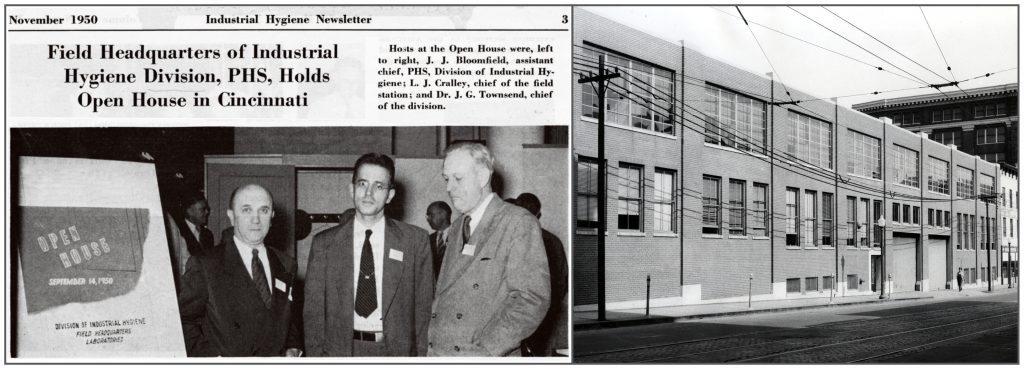
The 1014 Broadway Field Headquarters was completed in 1950. When asked about a story that 1014 Broadway was a lead smelting facility before PHS occupied it, Cralley noted that the smelting facility was actually adjacent to the PHS building. This still came with issues. Cralley noted, “We had problems there because we had to be very careful when doing lead analysis, and we didn’t do it when it was dusty outside.”
The 1950’s were often fraught and uncertain times for the PHS Industrial Hygiene Field Headquarters in Cincinnati. Nevertheless, its personnel and leadership’s tenacity and dedication kept research and operations alive and funded. Some notable studies in this transition time to PHS Cincinnati-based and Salt Lake City-based field research were of ferrous foundry workers in Illinois, atmospheric pollution in Salt Lake City, and diatomaceous earth mining and processing in California. In the 1960’s, the Industrial Hygiene Division and the profession’s work was tremendously advanced by the introduction of a true personal sampling pump and sampling head, first developed by R. Jeremy (Jerry) Sherwood and Don Greenhalgh. Battery-driven and small and light enough for workers to wear, it collected air samples from workers’ breathing zones more easily and precisely than was previously possible, resulting in more accurate measuring of workers’ industrial exposures.
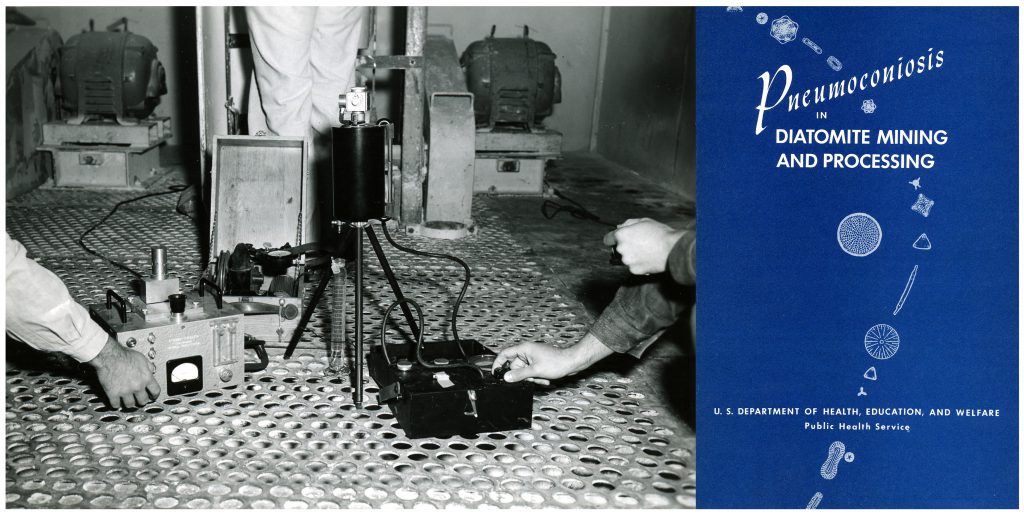
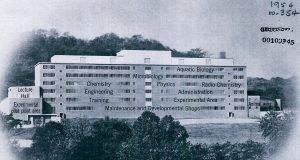
In 1954, the PHS state-of-the-art federal environmental safety and health research facility in Cincinnati was completed at Columbia Parkway and Grandin Road, six miles east of downtown in what is now the NIOSH Robert A. Taft Occupational Safety and Health Laboratory. Over the years, PHS Stream Pollution Investigations had become the Environmental Health Center and later the Division of Sanitary Engineering Services. It continually needed more space. Its staff and programs moved into the new building, including water quality research and radiation training that were at 1014 Broadway. The new facility was dedicated as the Robert A. Taft Sanitary Engineering Center by Health, Education and Welfare (HEW) Secretary Oveta Culp Hobby on April 8, 1954, in honor of the late U.S. Senator from Ohio.
In the 1960’s, momentum began building in the occupational health and labor communities and in Congress for federal law to protect workers’ safety and health. PHS occupational health and industrial hygiene personnel were part of this movement, which resulted in passage of the Federal Coal Mine Health and Safety Act (Coal Act) in 1969 and the Occupational Safety and Health Act (OSH Act) in 1970.
The Taft Sanitary Engineering Center’s research programs were reorganized into the Environmental Protection Agency (EPA) following the passage of the Clean Air Act in 1970. EPA staff moved to the new EPA Breidenbach Center near the University of Cincinnati and University Medical Center in 1976.
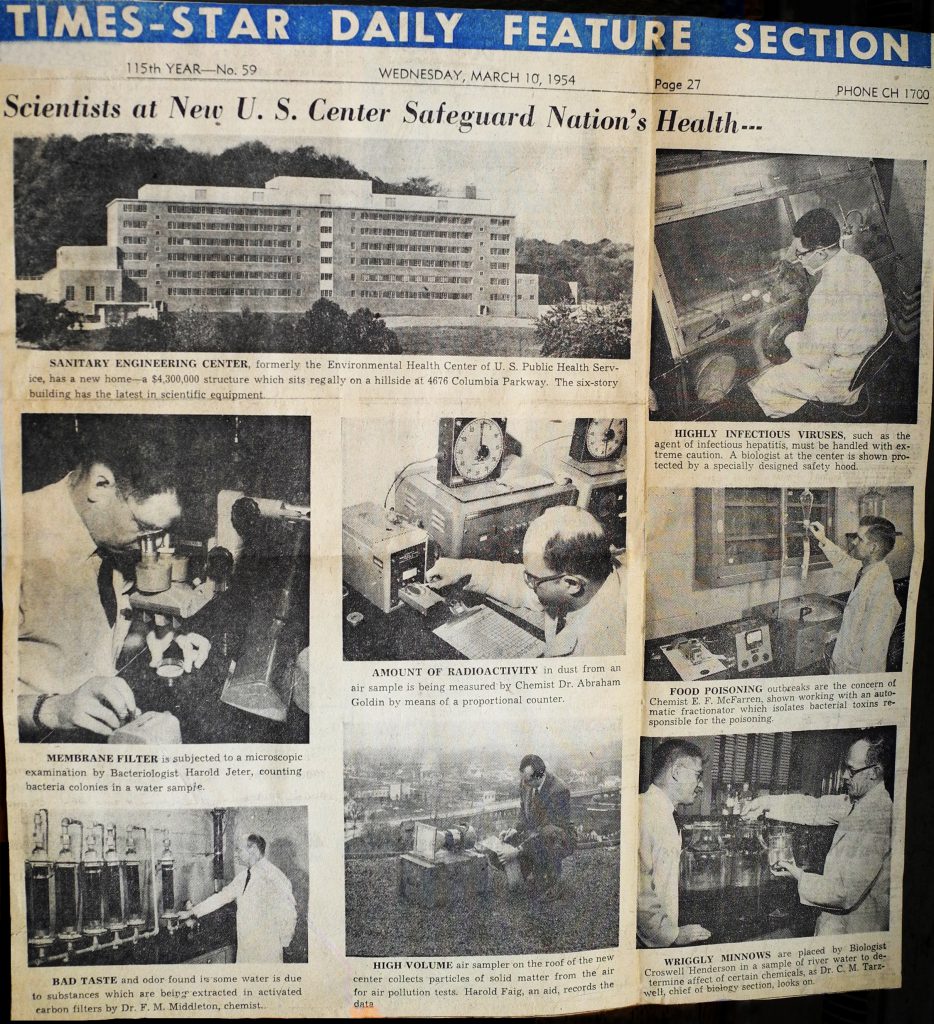
NIOSH programs and staff have occupied the entire Taft building since 1976. The six (some say seven) story facility has several interesting physical features. The terrazzo tile floor of the lobby is stunning. The most striking feature of the lobby, and perhaps the building, is the huge brass seal of the Public Health Service that is set in its floor. The seal is four feet in diameter.
In older photos of the Taft building, one can see sizable office windows. At some point in the building’s history, two thirds of each office’s window glass was replaced by opaque material. Nevertheless, when one looks out of any of the building’s back windows, the view is of the wide floodplain of the Little Miami River, which here is near its mouth at the Ohio River.
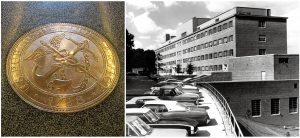
Today, the Taft building houses a thriving research program. Through research, education, and prevention NIOSH Cincinnati employees have strived to keep workers safe and healthy for 50 years. Another installment of this blog series will explore the NIOSH Alice Hamilton Laboratory for Occupational Safety and Health at Ridge Avenue, as well as other Cincinnati facility-related history. A companion blog will discuss the important research conducted in Cincinnati.
Barbara L. Jenkins, MA, CA, is a Public Health Analyst in the NIOSH Division of Field Studies and Engineering and a Certified Archivist.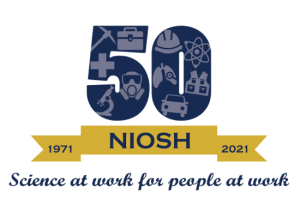
This blog is part of a series for the NIOSH 50th Anniversary. Stay up to date on how we’re celebrating NIOSH’s 50th Anniversary on our website.
References (in order used in blog)
“River Cleansing Researchers Here 25 Years,” Ward Moore, The Cincinnati Post, p. 21, Sep 29, 1938.
“Environmental Health: Taft Center in Cincinnati Has Been the PHS Mainstay in Pollution Research,” John Walsh, Science, 145, 3627, pp. 31-33, Jul 3, 1964.
The President’s Report on Occupational Safety and Health, Employment Safety and Health Guide, May 22, 1972.
The Federal Industrial Hygiene Agency – A History of the Division of Occupational Health, United States Public Health Service, Henry N. Doyle, 1975 (manuscript).
Industrial Hygiene Newsletter (later Industrial Health Monthly) Category:Industrial Hygiene Newsletter – Wikimedia Commons “Field Headquarters of Industrial Hygiene Division, PHS, Holds Open House in Cincinnati,” Industrial Hygiene Newsletter, 10, 11, pp. 3-4, November 1950. File:1950-11 Industrial Hygiene Newsletter.pdf – Wikimedia Commons
“Characterizing and Controlling Industrial Dust: A Case Study in Small Particle Measurement,” Richard S. Combes and Alan Warren, Env. Monitoring and Assessment, 106, pp. 43-58, 2005.
NIOSH-Cincinnati seminar by Lewis Cralley, PhD, June 15, 1995. Captioned video: CDC Youtube, https://youtu.be/Dt5gsQU3dTs
“Historical Perspectives: Industrial Hygiene in the U.S. Public Health Service (1914 – 1968),” Lewis J. Cralley, App. Occ. and Env. Hyg., 11, 3, pp. 147-155, 1996.
“The Beginning of the Science Underpinning Occupational Health,” J.W. Cherrie, Ann. Occup. Hygiene, 47, 3, pp. 179-185, 2003.
“Secretary Hobby Dedicates PHS Center April 8,” N.I.H. Record, vi, 6, April 1, 1954.
“CDC History: NIOSH Cincinnati,” CDC Connects (CDC Intranet), January 18, 2007.
“From the Director’s Desk NIOSH Cincinnati: Yesterday, Today, and Tomorrow,” NIOSH eNews, 4, 6, October 2006.
Posted on by

